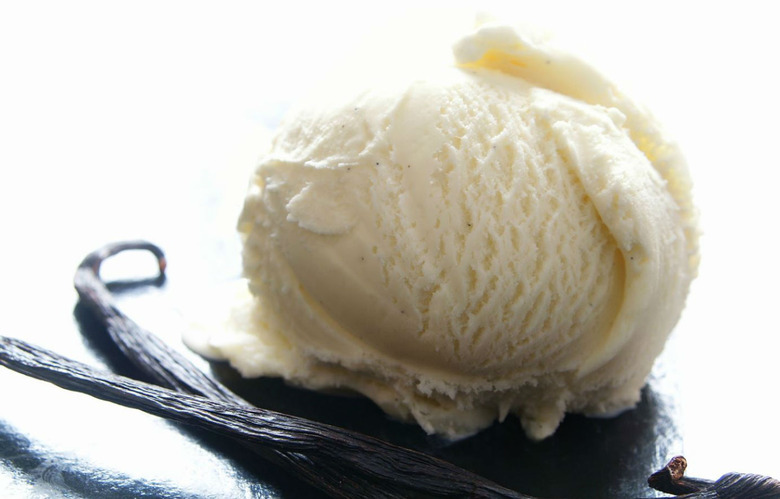What Makes 'Premium' Ice Cream Premium?
Spend any time browsing through the ice cream selection at your local supermarket, and you'll discover that brands like Ben & Jerry's and Haagen-Dazs refer to themselves as "superpremium." But what does that mean, exactly?
Well, if you eat some Ben & Jerry's vanilla ice cream side-by-side with, say, Breyer's ice cream, the answer should be fairly obvious. Ben & Jerry's comes across as denser and more creamy, and if you look at the nutrition label, you'll find that it also contains a lot more fat and calories.
According to the International Dairy Foods Association, ice cream falls into four "Quality Segments," which are determined by "price, brand positioning, product packaging, quality of ingredients, milkfat content and the amount of overrun (air) in the product," according to the site. "Overrun refers to the amount of aeration the ice cream undergoes during its manufacture that keeps the mixture from becoming an inedible frozen mass. Overrun is governed by federal standards in that the finished product must not weigh less than 4.5 pounds per gallon."
"Economy" and "Regular" ice cream Quality Segments essentially meet the overrun standards, but not much more. They're inexpensive, and have a relatively light and airy texture. "Premium" ice cream has a low overrun and higher fat content, and generally contains higher quality ingredients. "Superpremium" ice cream has a very low overrun (meaning a very small amount of air and a very dense texture) and only the highest-quality ingredients.
In short, yes, the word "superpremium" on an ice cream label actually has meaning. It doesn't get any better!
